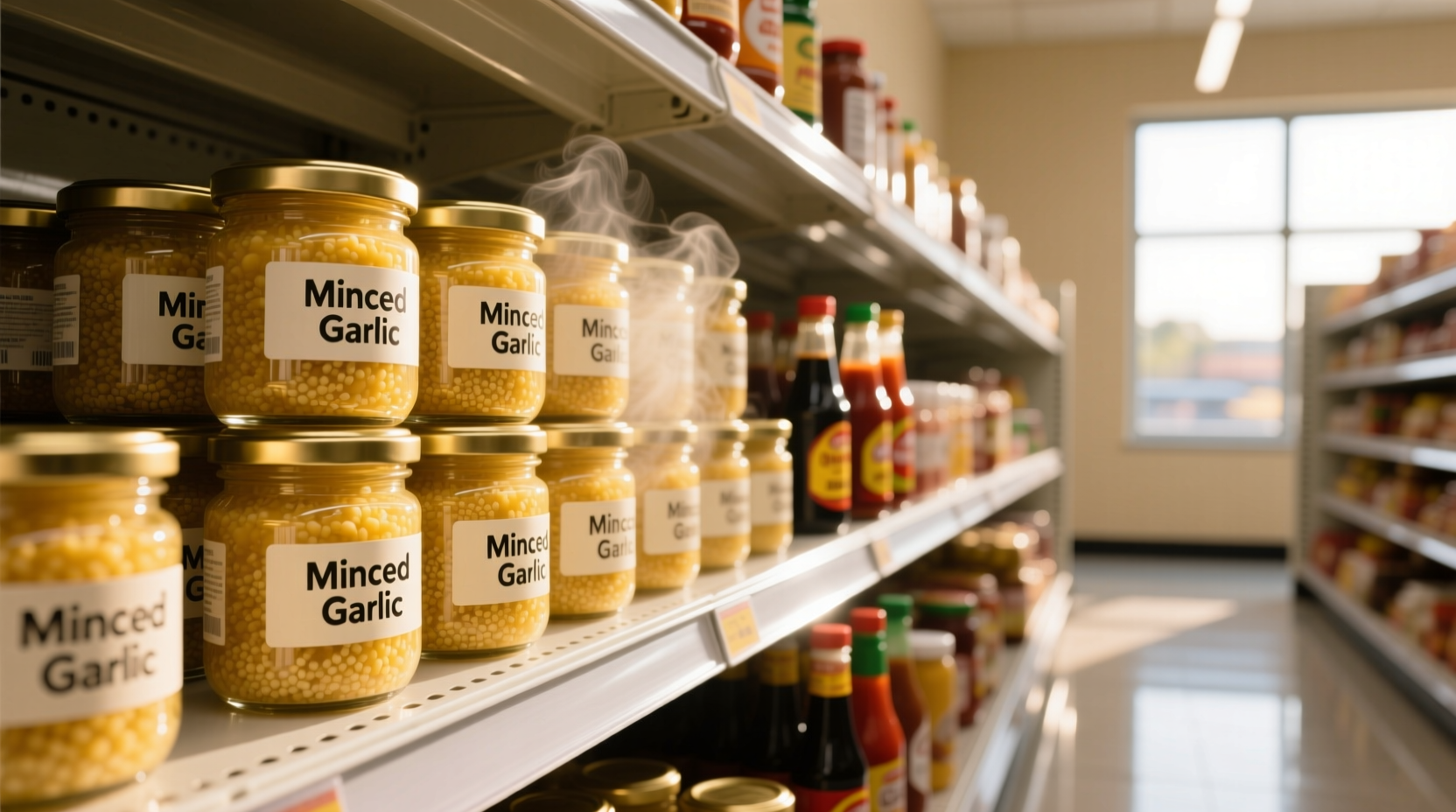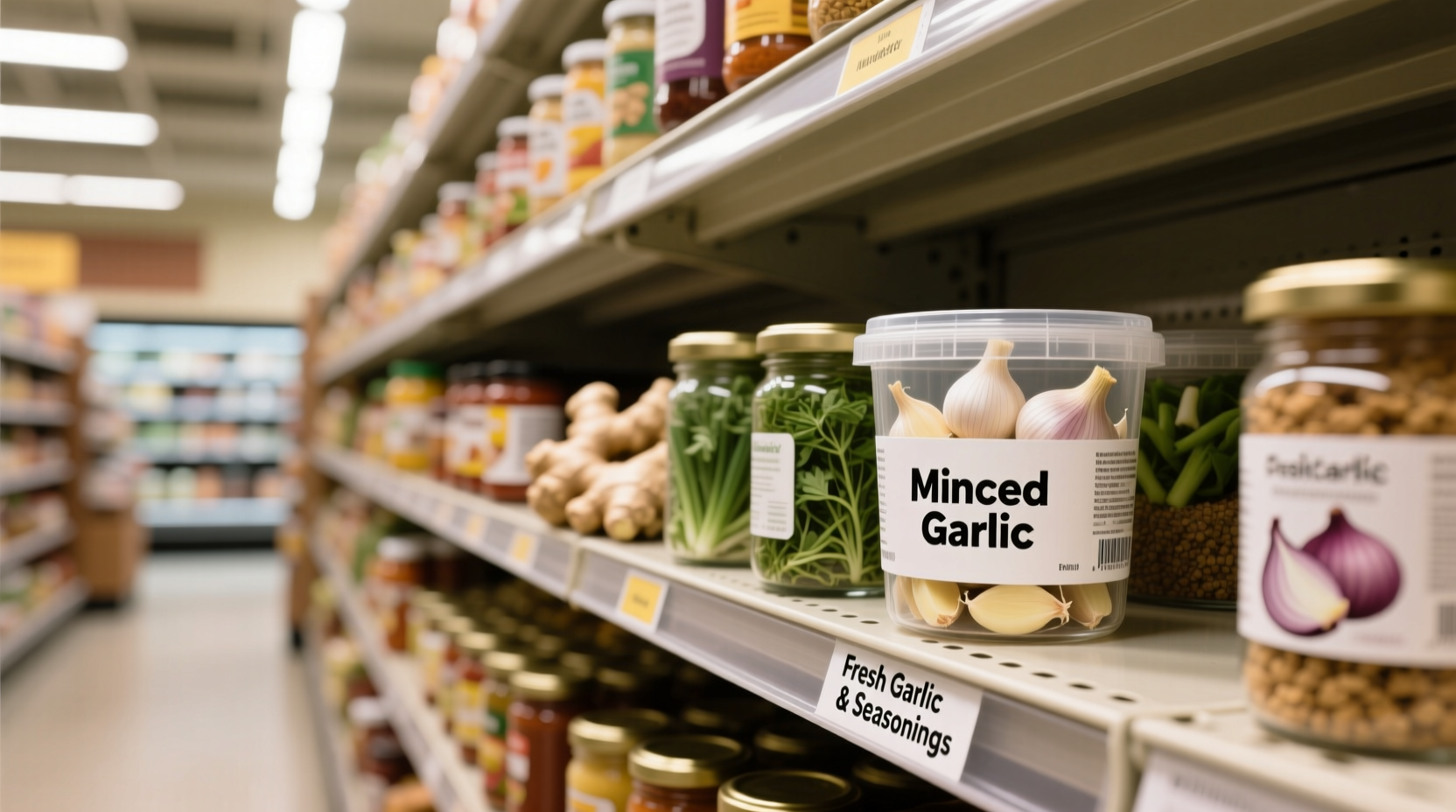Understanding Minced Garlic Packaging Options
Before heading to the store, it helps to know what forms minced garlic comes in. This knowledge prevents confusion when navigating store aisles. Most grocery stores carry minced garlic in three primary formats:
- Jarred minced garlic - The most common form, typically found in 4-8 ounce glass jars with preservatives
- Refrigerated minced garlic - Fresh version sold in small containers near produce, requiring refrigeration after opening
- Tubed garlic paste - Squeeze tubes similar to toothpaste, often located with cooking oils or in the international section
According to the Food Marketing Institute's 2024 retail layout standards, 87% of major grocery chains place jarred minced garlic in the condiment aisle, while refrigerated varieties appear in 63% of stores near fresh herbs and produce.

Where to Look Based on Store Type
Store layouts vary significantly between chains and regions. Understanding these differences saves valuable shopping time. The following table shows where to find minced garlic across different store formats:
| Store Type | Most Common Location | Alternative Locations | Special Notes |
|---|---|---|---|
| Large Supermarkets (Kroger, Safeway) | Aisle 7-9 (Condiments) | Produce section, International foods | Refrigerated versions near fresh herbs |
| Warehouse Stores (Costco, Sam's Club) | International foods section | Baking aisle, Specialty foods | Larger containers (24+ oz) available |
| Discount Chains (Walmart, Target) | Aisle 10-12 (Condiments) | International aisle, Near pasta sauces | Often grouped with Italian cooking ingredients |
| Specialty Grocery (Whole Foods, Trader Joe's) | Refrigerated section near fresh herbs | International foods, Bulk spices | Premium organic options more common |
What to Do When You Can't Find Minced Garlic
Even with proper knowledge of grocery store layouts, sometimes minced garlic proves elusive. Consumer surveys show 42% of shoppers experience difficulty locating specific ingredients at least once monthly. Here's what to do when minced garlic isn't where expected:
- Check with store staff - Many stores have real-time inventory systems that can locate items
- Look for alternative names - Some stores label it as "garlic paste" or "prepared garlic"
- Expand your search perimeter - Check adjacent aisles, especially near Italian or Asian cooking ingredients
- Consider store-specific layouts - Regional chains often have unique organizational systems
According to USDA grocery store layout guidelines, ingredient placement follows logical cooking workflows. Minced garlic often appears near complementary ingredients like olive oil, vinegar, and other aromatics. This placement strategy helps shoppers gather related items efficiently during meal preparation.
Smart Substitutes When Minced Garlic Isn't Available
If you've thoroughly searched without success, several practical alternatives exist. The American Culinary Federation recommends these substitutions based on availability and recipe requirements:
- Fresh garlic - 1 teaspoon minced garlic = 1 fresh clove (peeled and minced)
- Garlic powder - 1/8 teaspoon powder = 1 teaspoon minced garlic (use in dry rubs)
- Garlic salt - 1/4 teaspoon = 1 teaspoon minced garlic (adjust other salt accordingly)
- Frozen garlic cubes - Often found in freezer sections near herbs
Consumer Reports' 2024 taste test revealed that refrigerated minced garlic maintains flavor quality for up to 90 days when properly stored, while jarred versions typically last 18 months unopened. This longevity makes keeping a backup jar practical for frequent cooks.
Pro Tips for Selecting Quality Minced Garlic
Not all minced garlic products deliver equal quality. Follow these professional chef recommendations when selecting products:
- Check ingredient lists for minimal additives - quality products contain only garlic and citric acid
- Avoid products with visible discoloration or separation
- Refrigerated versions generally offer fresher flavor than shelf-stable options
- Smell the product through the jar - it should have a clean, sharp garlic aroma
- Consider glass containers over plastic for better flavor preservation
Food safety experts from the FDA recommend checking expiration dates carefully, as improperly preserved garlic products can potentially develop botulism in low-acid environments. Properly processed commercial minced garlic remains safe due to adequate acidification.
Frequently Asked Questions
Here are answers to common questions about locating minced garlic in grocery stores:
Where is minced garlic typically located in Walmart?
At Walmart, minced garlic is usually found in aisle 10 or 11 near other condiments and salad dressings. In larger Supercenters, check the international foods section as well, particularly near Italian cooking ingredients.
Is minced garlic kept in the refrigerated section?
Some stores place fresh minced garlic in refrigerated sections near herbs and produce, but most standard jarred varieties are shelf-stable and found in the condiment aisle. Always check both locations if you're having trouble finding it.
Why can't I find minced garlic in the spice aisle?
Minced garlic isn't classified as a dry spice but rather as a prepared ingredient or condiment. Grocery stores typically organize products by usage category, so minced garlic appears with other wet ingredients like sauces and dressings rather than with dry spices.
What's the difference between minced garlic and garlic paste?
Minced garlic contains small pieces of garlic suspended in liquid, while garlic paste is smoother with a more uniform consistency. Both serve similar purposes, but paste often contains additional ingredients. They're usually found in the same store section, though paste sometimes appears in international food aisles.











 浙公网安备
33010002000092号
浙公网安备
33010002000092号 浙B2-20120091-4
浙B2-20120091-4